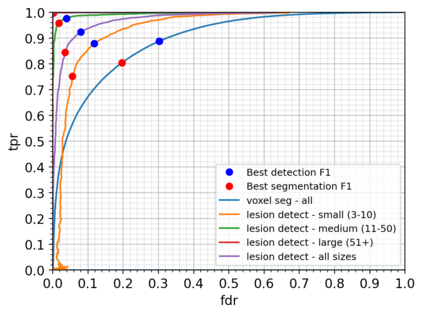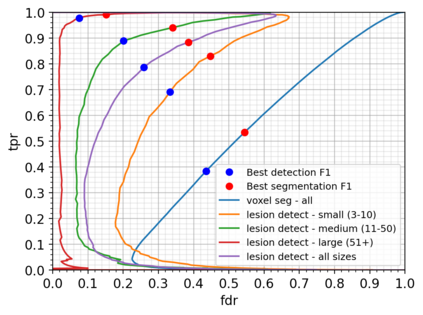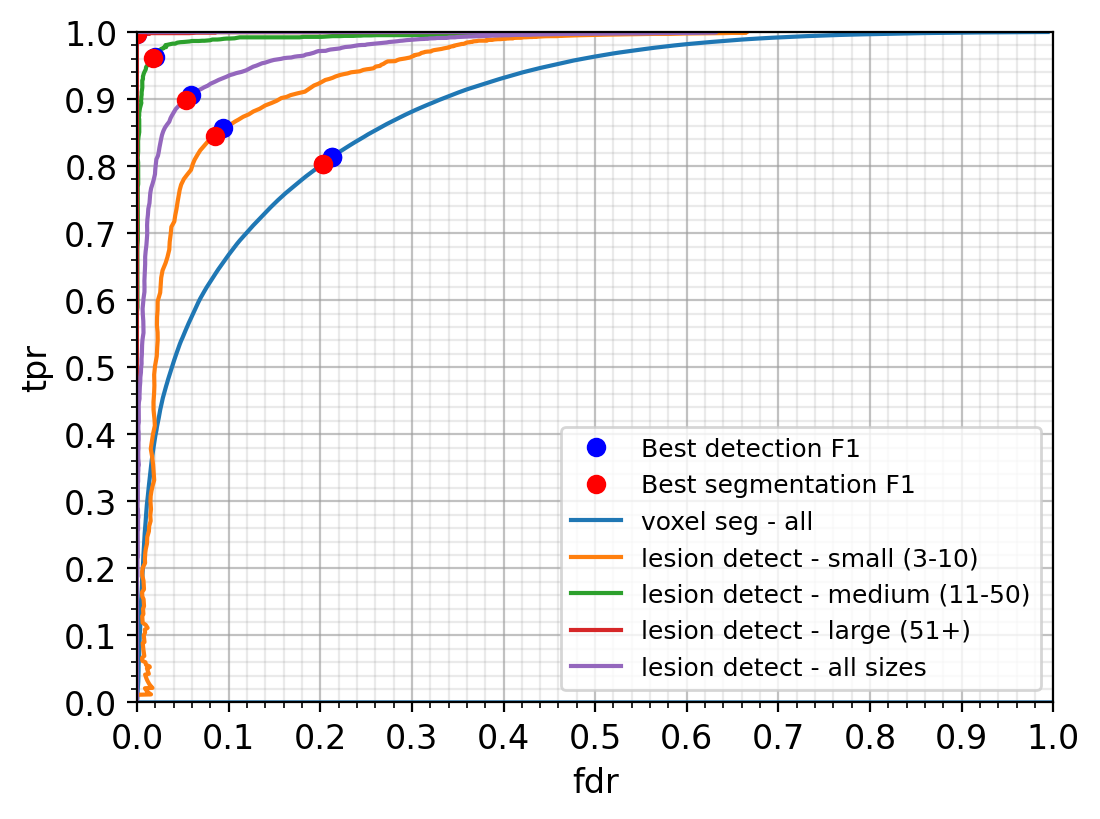There are many clinical contexts which require accurate detection and segmentation of all focal pathologies (e.g. lesions, tumours) in patient images. In cases where there are a mix of small and large lesions, standard binary cross entropy loss will result in better segmentation of large lesions at the expense of missing small ones. Adjusting the operating point to accurately detect all lesions generally leads to oversegmentation of large lesions. In this work, we propose a novel reweighing strategy to eliminate this performance gap, increasing small pathology detection performance while maintaining segmentation accuracy. We show that our reweighing strategy vastly outperforms competing strategies based on experiments on a large scale, multi-scanner, multi-center dataset of Multiple Sclerosis patient images.
翻译:许多临床环境都要求准确检测和分解病人图像中的所有中心病理(如损伤、肿瘤),如果出现大小损伤的混合情况,标准的二进制交叉酶损耗将导致大型损伤的更好分解,而忽略了小损伤。调整操作点以准确检测所有损伤,通常会导致大型损伤的过度分解。在这项工作中,我们提议了一项新的调整战略,以消除这一性能差距,增加小病理检测性能,同时保持分解的准确性。我们表明,我们的重新收缩战略在大规模、多扫描、多中心多发式多发性硬体患者图像实验的基础上,大大超越了相互竞争的战略。







